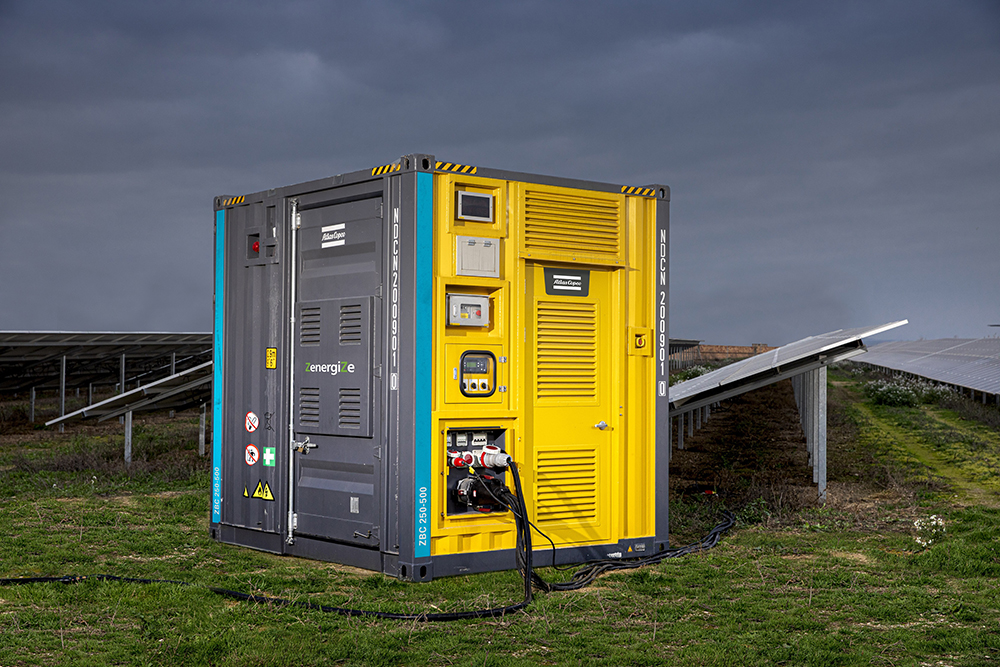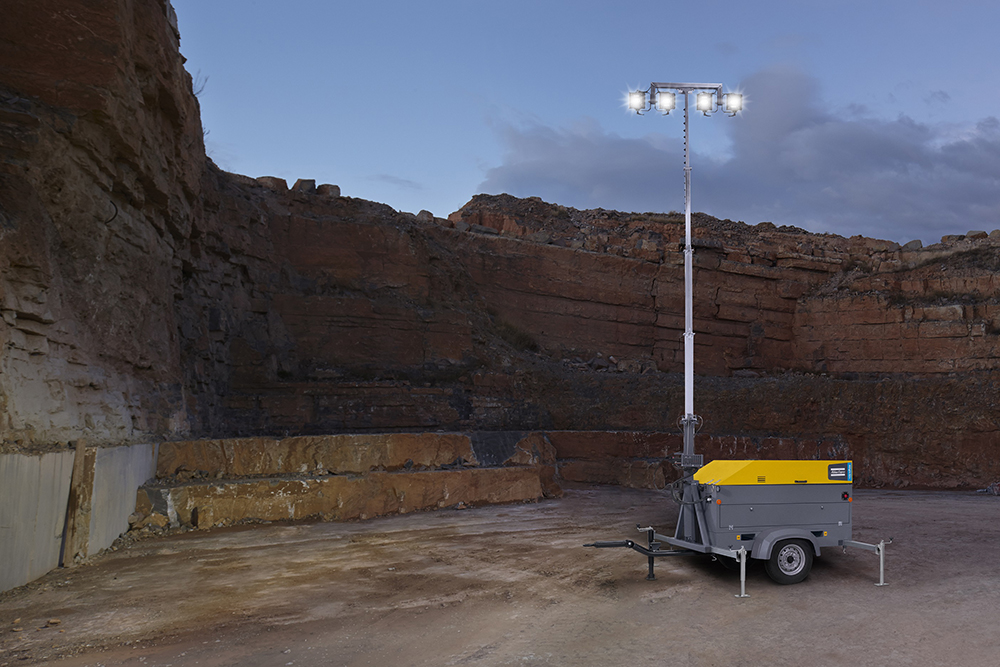
Sustainability continues to be a hot topic in the aggregates industry as it accounts for approximately 11% of the world’s total CO2 emissions. The benefits of moving towards greener technologies are clear regarding the environment, but, crucially, leveraging them can also bring significant business advantages to the operators. Here, we look at how renewable energy and the latest technologies can help constructors introduce a greater level of sustainability and optimise operation in the process.
Green operation has traditionally not been the main objective for constructors. Cost control and efficiency have, for a good reason, been guiding project planning and execution. However, growing awareness of the effects of global warming has put the aggregates sector as well as other machine-heavy industries under the spotlight, leading to the introduction of tighter regulations, such as Stage V. Undoubtedly, the pressure to reduce emissions is high. Yet, at the same time, the need to improve operational efficiency is higher than ever. Fortunately, these two goals can go hand in hand. Many technologies that are already available target sustainability while delivering better efficiency and contributing to a lower total cost of ownership (TCO) than traditional alternatives.
Let’s look at power generation – an area primarily dominated by diesel generators. Here, the recent developments in high-density lithium-ion battery energy storage solutions provide operators a simple way of addressing sustainability by complementing the generator’s power with energy stored from renewable sources. Energy storage systems can facilitate smart load management, making generators more efficient, flexible, and quiet to operate. The technology helps operators address many of the challenges of remote sites where grid power is unavailable and city-centre locations where emissions (CO2, NOx, and noise) limitations are imposed.
Energy storage systems are also key to reducing the size of the generator required. Some common equipment, such as cranes, rely on a significant power surge to get started yet consume little power for the rest of the shift, leading operators to choose an oversized generator to provide those few seconds of peak power. With li-ion battery energy storage systems, the batteries are used to meet the peak power requirement. When power requirements are lower, the generator will power the load during the rest of the time. By utilising a hybrid solution, constructors can provide the required power but reduce the negative aspects of using an unnecessarily large generator, including excess emissions, black smoke, and noise.
Atlas Copco’s energy storage systems are a concrete example of the benefits combining these two technologies can deliver. It means that a generator which is 40% smaller can be used, minimising emissions. With a hybrid solution, operators can improve sustainability, cut costs and the battery system can also help extend the lifespan of the generator while optimising its performance. Furthermore, during its lifecycle, a ZBP unit only emits 50% of the emissions of a standard standalone generator, saving approximately 100 tons of CO2 – the equivalent of planting 450 trees (assuming a tree life of 30 years). When used in island mode, CO2 savings can reach up to 100% if the unit is powered by renewable energy sources. Moreover, the Atlas Copco’s energy storage systems are also lighter and more compact than traditional alternatives, yet able to provide over 12 hours of power with a single charge.
Another area where the introduction of complementary technologies can help reap great rewards, both in terms of increasing sustainability as well as reducing noise and the cost of operation, is light towers. They are an essential part of equipment for the aggregates industry, but most of the models in the market rely on diesel engine power, especially in remote locations. However, this does not need to be the case: electric-only models that use grid power, as well as li-ion battery-powered LED options, are offering the same performance as their diesel counterparts with the added benefits of reduced CO2 emissions, lower refuelling cost, and quiet operation.

The latest HiLight S2+ solar light tower from Atlas Copco, for example, helps users cut CO2 emissions by up to six tonnes compared to traditional technologies. The renewable energy generated by its extensible solar panels enables autonomous operation during times when the yield is greater than the energy demand. However, during darker months or times of high-energy demand, the tower can be charged with any external power source such as energy storage systems. If this power is coming from renewable sources, the light towers offer a 100% green solution.
The battery-powered LED Atlas Copco HiLight Z3+ light tower delivers run times of up to 32 hours without noise during operation. Its charging time, directly from auxiliary, grid, portable generator, or energy storage systems, is just six hours for the standard Z3+ unit. The HiLight Z3+ also offers a yearly reduction of one tonne of CO2 emissions and diesel savings of more than 1,000 litres (CO2 emissions per litre of diesel burned = 2.6kg).
Another light tower that can help users cut CO2 emissions in very tough environments, such as quarries, is the HiLight E3+ electric light tower. This plug-and-play light tower’s environmental resilience extends application opportunities, improves reliability, reduces total cost of ownership, and preserves resale values. Equally, though, it offers superior performance during operation. With no mechanical parts to maintain and no liquids or emissions, the HiLight E3+ light tower is environmentally friendly and virtually maintenance-free.
Pumps are another piece of equipment found on most aggregates sites that can deliver significant savings, both in terms of CO2 emissions and TCO. Some environmentally conscious operators are already taking advantage of the latest technologies to reduce the operational impact of the machines. Some manufacturers have introduced new and complementary technologies to make the use of pumps more efficient. Atlas Copco, for example, has made the Wear Deflector an integral part of the design of its WEDA D70 range of electric submersible dewatering pumps. The unique hydraulic design reduces the size of the pump by up to 40% while contributing to a high level of pump efficacy and long life, even in challenging operating conditions, resulting in a low TCO.
Digital technologies, such as Atlas Copco’s FleetLink, can help further improve monitoring and assist operators in working more efficiently. FleetLink enables remote monitoring of pump performance and condition, providing the operational insight needed to optimise pump usage and maintenance. Tools like this can help keep equipment in optimal condition and eliminate any excess emissions resulting from potential malfunction while ensuring a continuous, cost-effective operation. This telematics system is included in Atlas Copco’s PAS HardHat Stage V dewatering pumps, empowering operators to reduce emissions because they are certified to work with HVO, the newest generation of biodiesel oil, to reduce the carbon footprint of the product itself.
As these examples demonstrate, introducing low-emission technologies to the aggregates industry can be simple, and also work towards zero-emissions operations. Reducing CO2 emissions is good for the planet as well as the brand image and customer relationships. By demonstrating awareness of the environmental impact of aggregates and, more importantly, the willingness to address it, forward-thinking operators can shape the industry towards a more sustainable future. This change can also bring significant benefits to the business: renewable energy sources deliver low-cost or even free energy, while more energy-efficient machines tend to consume less power, be easier to move around, and emit less smoke and noise.
When the rewards of choosing greener technologies include improved operation, lower TCO, and a healthier workplace, introducing a greater level of sustainability to the aggregates industry should be on the agenda for every business.








